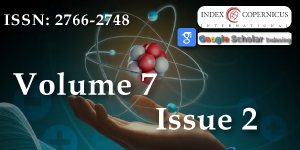Cyclical Cosmology, Energy and Curvature of Space-Time
Main Article Content
Abstract
Cyclical cosmic conditions illuminate profound philosophical and physical implications regarding the fundamental nature of the universe. From this perspective, a singularity could actually symbolize a transformation of the underlying structures and laws of our universe, providing insights into the relationships among energy, curvature, and existence of the universe itself. In cyclical cosmology, the universe can be understood as existing in two distinct states: a static potential state and an active kinetic state. Quantum mechanics also reinforces the belief that even in seemingly empty spaces, vacuum fluctuations and differences in potential can give rise to emergent phenomena.
Article Details
Copyright (c) 2024 Bhushan S.

This work is licensed under a Creative Commons Attribution 4.0 International License.
Bhushan S. Energy transformation and the emergence of space-time: A classical-quantum unified framework. Phys Int. 2024;15(1):1-6. Available from: https://doi.org/10.3844/pisp.2024.1.6
Einstein A. Relativity: The special and general theory. New York: H. Holt and Company; 1920. Available from: https://www.ibiblio.org/ebooks/Einstein/Einstein_Relativity.pdf
Jacobson T. Thermodynamics of spacetime: The Einstein equation of state. Phys Rev Lett. 1995;75(7):1260-3. Available from: https://doi.org/10.1103/PhysRevLett.75.1260
Penrose R. Gravitational collapse and space-time singularities. Phys Rev Lett. 1965;14(3):57-9. Available from: https://doi.org/10.1103/PhysRevLett.14.57
Hawking S. A brief history of time. New York: Bantam Books; 1988.
Penrose R. Cyclic cosmology and the arrow of time. Int J Mod Phys D. 2010;19(14):2321-33.
Gambini R, Pullin J. The emergence of classical time from a quantum gravity perspective. Int J Mod Phys D. 2009;18(3):319-29.
Hartle JB, Hawking SW. Wave function of the universe. Phys Rev D. 1983;28(12):2960-75. Available from: https://doi.org/10.1103/PhysRevD.28.2960
Dayalbagh Educational Institute. Discourse by Rev. Prof. P.S. Satsangi Sahab. 2024 Feb 25. Available from: https://www.dei.ac.in/dei/edei/files/2024/Discourse_Rev_Prof_PS_Satsangi_Sahab_25_02_2024.pdf
Rovelli C. Emergent time and the origin of time’s arrow. Found Phys. 2012;42(10):1062-76.
Bhushan S. Universal matter synthesis and management via constructive resonance: Pioneering advancements in physical sciences and applied systems. Int J Fundam Phys Sci. 2023;13(3):30-40. Available from: https://doi.org/10.14331/ijfps.2023.330160
Barbour JB. Time and quantum gravity: Philosophical perspectives. Stud Hist Philos Mod Phys. 2020;72:20-33.
Sakharov AD. Vacuum quantum fluctuations in curved space and the theory of gravitation. Sov Phys Dokl. 1967;12(11):1040-1. Available from: https://ayuba.fr/pdf/sakharov_qvf.pdf
Verlinde E. On the origin of gravity and the laws of Newton. J High Energy Phys. 2011;2011(4):29. Available from: https://doi.org/10.1007/JHEP04(2011)029
Einstein A. Quantentheorie des einatomigen idealen Gases. Sitzungsber Preuss Akad Wiss. 1925;1:3. Available from: https://www.scirp.org/reference/referencespapers?referenceid=3281121
Callender C. What makes time special? Oxford: Oxford University Press; 2017. Available from: https://global.oup.com/academic/product/what-makes-time-special-9780198797302?cc=us&lang=en&
Anderson E. The problem of time in quantum gravity. Found Phys. 2017;47(3):174-203.
Smolin L. Three roads to quantum gravity. New York: Basic Books; 2001. Available from: https://www.researchgate.net/publication/252914350_Book_Review_Three_roads_to_quantum_gravity_Basic_Books_2001

